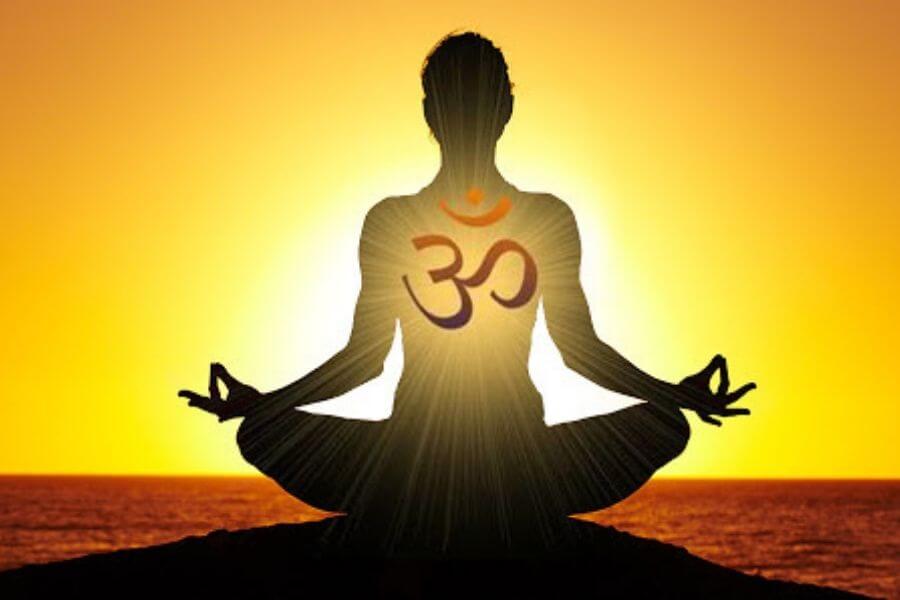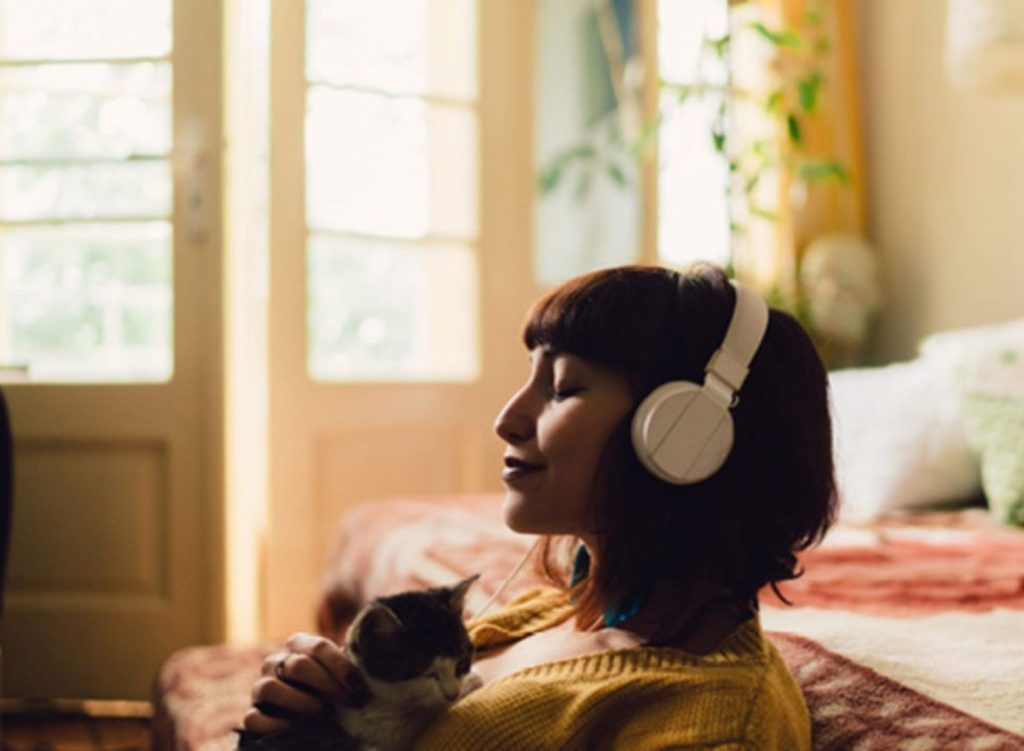Health is a state of holistic social, mental, and physical well-being; it is not merely the absence of disease or infirmity. When there is an infirmity, we need healing. The word “heal” in old English is “to return to a sound state and healthy again.” This is where we consider using sound for body healing. Body and mind are two sides of the coin. Whenever there is an infirmity in the body, we work on the mind, and it gets healed.
Sound can heal the body in many ways. It works on physical, psychological elements. Emotional imbalances reflected by anxiety, depression, and stress can lead to nerve disorders and other diseases like cancer, high blood pressure, and decrease the immunity of the body.
Recent researches in Western medicines show how sound work on a cellular level, countering flight, and fight hormone with activation of “parasympathetic nervous system (PNS).” It drops down stress hormones released by the “sympathetic nervous system,” corticotrophin and adrenocorticotropic hormones (ACTH); it keeps the body on the alert mode. As soon as there is a slow down of cortisol, PNS releases “acetylcholine,” stress releasing hormone that reduces anxiety, stress, lifts mood, and lowers blood pressure.
Listening, singing music, toning, humming, chanting, and playing various instruments have an emotional impact on our body. Since ancient times, music used to cure many disorders, to boost morale in military troops, helped people to work faster, and increase productivity.
The sound produced by the vibrations of a material object travels through a medium (solid, liquid, gas) from the air. As vibrations reach to ear, they are converted to electrical impulses in the brain, called sound. Sound has loudness, depending on the amplitude of wave measured in decibels 10 to 125 decibels.
Sounds have waves, patterns, and frequencies, pitch and quality, rhythm, and resonance. (Frequency of forced vibrations on the body matches the natural body frequency leads to an increase in amplitude.) Our body organs have natural frequencies that determine how cells absorb sound from the environment. Studies showed that the metabolic process around the cells gives out a specific sound that interacts with the environment frequencies. Classical music increases the rate of development of synaptic connections in young children.
Types Of Music Therapy
| Types | Benefits | |||
|---|---|---|---|---|
| 1. | Guided Meditation | Meditation under instructor in class or in session through. | Involve chanting, repeating of mantras, prayers. | Decrease stress, depression, blood pressure pain. Improve memory |
| 2. | Neurological Music therapy – Toning and Humming | The book Toning: The Creative Power of the Voice, Laurel Elizabeth | Sounds seem to trigger endorphin release – masking pain which may help the body to heal more effectively. | Decrease stress, cardiac and respiratory rate Promote relaxation Helpful before spine surgery |
| 3. | Bonny Method | Guided Imaginary and music (GIM) classical music and imaginary | Explore personal growth, consciousness, transformation | |
| 4. | Nordroff– Robbins | With skilled musicians | Children with developmental delay, autism, dementia | |
| 5. | Tuning fork Therapy | Calibrated metal tuning forks apply specific vibrations to different parts of body | Help to release tension ,energy, Promote emotional balance Relieve muscle and bone pain | |
| 6. | Brainwave | By Binaural beats | Stimulates brain into specific | Causing relaxation |
| 7. | Entertainment | state using pulsing sound to encourage your brain wave to align to frequency of beat | Sleep Helps in PMS Improve behavioral problems in children |
Waves from sound stimulate touch fibers that affect pain perception, pain, arthritis, menstrual pain, post-operative pain, knee replacement pain, lowering blood pressure, and increase circulation. (Dr. Marlynn Wei (Ph.D.), psychiatrist & therapist, New York)
Studying Sound In Ancient Indian Culture

Our ancient Rishis, who had an in-depth knowledge of Ayurveda, also attached with fundamental/basic sounds and understood that everything was held together by things which we cannot see. Ayurveda speaks about applying specific primordial sound like a template on disorganized/diseased cells and helps in bringing it back by repairing it. Sound effects “Dosha” also.
In Vedas, the sound was understood to have a healing effect on the body. Various instruments give specific vibrations of sound. Instruments used are Tibetian Singing bowls, tuning forks, flute, guitar, piano, sitar, and tabla.
For example:
| Sr No | Instrument | Quality | Doshas |
|---|---|---|---|
| 1 | Bamboo flute | Soft notes – soothing effect | Prevent increase of Vat |
| 2. | Sitar | Strong quality Nasal overtones and rich sound | Pitta – strong |
| 3. | Sarod | Deep, awaking sound Clear tones | Keep balance and cheer up Kapha |
Our body is made up of “Panchamahabhutas” (air, space, fire, water, earth). Similarly, “Dosha” is also made up of 5 elements. 3 doshas are Vata, Pitta, and Kapha. It is important to maintain harmony in every dosha.
| Sr No | Dosha | Elements | Work | Imbalance leads to |
|---|---|---|---|---|
| 1. | Vata (Prominent dosha) | Space + air | Communication mind and body | Degenerative joint diseases, mental illness, fear, nervousness |
| 2. | Pitta | Fire + water | Metabolism Visuals | Skin, stomach problems, inflammation |
| 3. | Kapha | Earth + water | For stability Maintains fluidity | Weight gain/fat deposition, lethargy, depression, mental sign |
Nadis And Chanting Of Mantras

It works with the transformation, restoration, and reconstitution of the energies of the soul through channels known as nadis, subtle channels of the chakra system related to the soul’s infrastructure. Russill Paul, in his Yoga of sound, stated that “sound optimizes the performance of energy vortexes or chakras which govern our emotional, psychic and spiritual states of consciousness.”
The word mantra means to protect and instrument. Mantras with their vibrations are pure. A sound has effects on our consciousness and in mind, helping us to release psychic toxicity. They are interconnected with all the actions required in the healing process.
Chakras And Bija Mantras

Our body has energy wheels called “Chakras.” Activating chakras is a process of chanting them with specific sounds related to that chakra. For Muladhara chakra, chanting of “Lam” will be helpful. Each vowel is designated to each chakra. Chanting “Bij Mantra,” called seed sound, increase the frequency of “Prana” moving through particular “chakra” to purify and mind and body. One observes a change in them.
Example: Detailed information about Chakra, its location, characteristics, Bij Mantra, Frequency
| Sr No | Chakra | Location | Quality | Benefits | Mantra | Frequency |
|---|---|---|---|---|---|---|
| 1 | Base root Muladhar | Base of spine | Grounding, security, confidence | Helps to increase earth element | I am ‘Lam/Ra’ | 396 Hz |
| 2 | Sacral Swadhisthan | 1-2 inches below naval | Creativity, Emotional expression | Helps to increase water element | I feel ‘Vam’ | 417 Hz |
| 3 | Solar Plexus Manipura | Just below sternum | Sense of self, purpose | Helps to increase fire in mind, body | I will ‘Ram’ | 528 Hz |
| 4 | Heart Anahat | Centre of chest | Love, compassion, empathy, acceptance | Helps to increase air in mind, body | I feel ‘Yam’ | 639 Hz |
| 5 | Throat Vishuddha | Throat | Truth, self control | Either element works on mind, body | I speak ‘Ham’ | 741 Hz |
| 6 | Third eye Ajna | Between the eyebrows | Intuition, 6th sense, thought, imagination | Influences other element, beyond physical, affects astral body | I know ‘Aum’ | 852 Hz |
| 7 | Crown | Top of the head | Spiritual wisdom connection to divinity | Physical, subtle | I understand ‘Aum’/ Om | 963 Hz |
God is devoted to every chakra example is Muladhara chakra – Ganpati and Crown chakra – Shiva (transformer/destroyer).
Considering Adi Shankaracharya (8th Century Hindu scholar, philosopher, teacher, and leader), all Hindus worship the five following Gods (Panchayatana/Pancha Devata) in order:
- Shiva
- Vishnu
- Devi (The Goddess)
- Surya (The Sun God)
- Ganesha/Ganpati
Constant harmonious vowel sounds in each mantra are connected back to source of universe.
| Sr. No. | Sound | Denotes |
|---|---|---|
| 1. | M | Maternal and material aspects of the universe |
| 2. | A (alpha) | Father nonmaterial |
| 3. | L | I am earth, Heavy closing sound |
| 4. | H | The light, airy, ethereal sound |
| 5. | R | Fire, Energetic |
Continuous correct tones for each mantra helps to maintain the wavelength of sound frequencies generated by the brain, make a more efficient mental process towards attention off mantra. (Russill Paul)
Om Mantra

“The sound of all sounds together” links us to Prakruti.
An explosion formed the universe, and scientists named it “the big bang.” Bang is a loud sound. Hawkins tells that galaxies are spreading or expanding apart; the universe is no cosmological constant. The universe’s expansion is linked to our mind consciousness.
University of Washington physicist John G. Cramer formed a sound of big bang mathematically. It is “hum” compared with “OM.”
Edgar Cayce called sound “The Medicine of the Future.”
Different Ragas Used In Therapy
Indian classical music has therapeutic values. Ragas plays an important role in it. It must be done under proper guidance and at the appropriate time. Examples are given below in the table.
| Sr. No. | Ragas | Useful for/treatment of |
|---|---|---|
| 1. | Bageshri | Diabetes, HTN, provides stability, calmness |
| 2. | Darbari (Darbari Kanada) | Helps relieve tension |
| 3. | Ahir Bhairav | Sustain chords that bring down blood pressure |
| 4. | Bhairavi | Provides relief from TB, cancer, sinus, toothache, cold |
| 5. | Malhar | Asthma, sunstroke |
| 6. | Todi | Cold, headaches |
| 7. | Hindol and Marva | Blood purification |
| 8. | Ananda Bhairavi | Suppress stomach pain, reduces kidney problems |
Music therapy is an “alternative medicine” way to communicate; it is helpful in intellectual development too. Music therapy supports people who are in pain and lower stress. It motivates in rehabilitation.
We all have experienced joy while listening to music. It has its therapeutic use; listening to music changes your mood, state of mind, etc. Another stream of music therapists comes with solutions for physical and emotional ailments with music through their research.
So listen music often while enjoying each and every moment.







